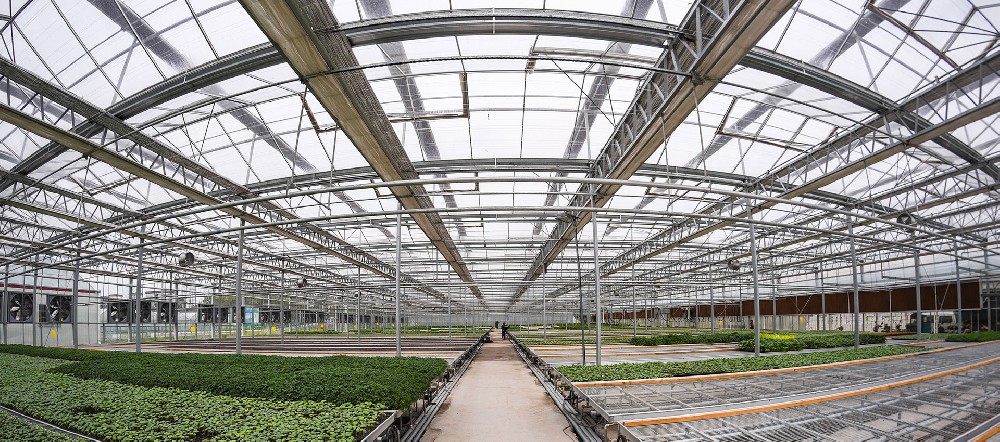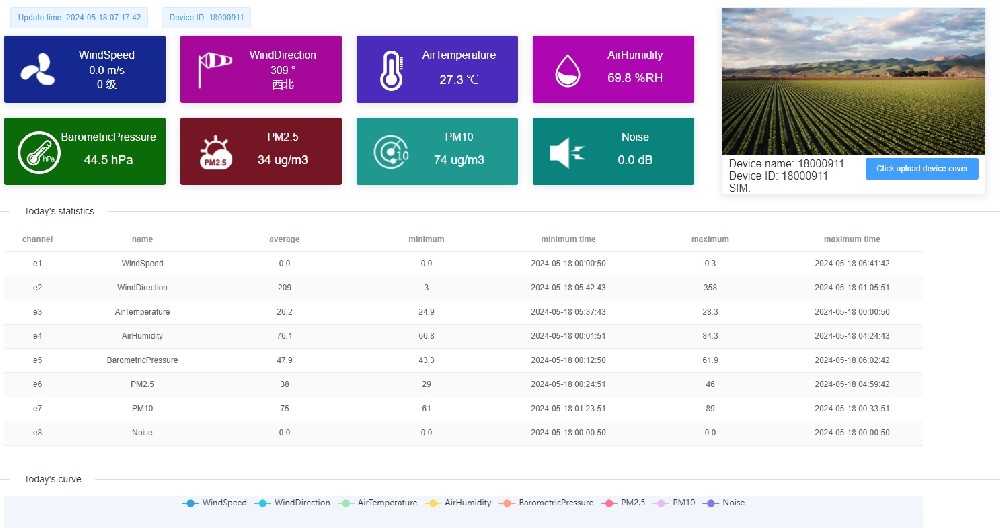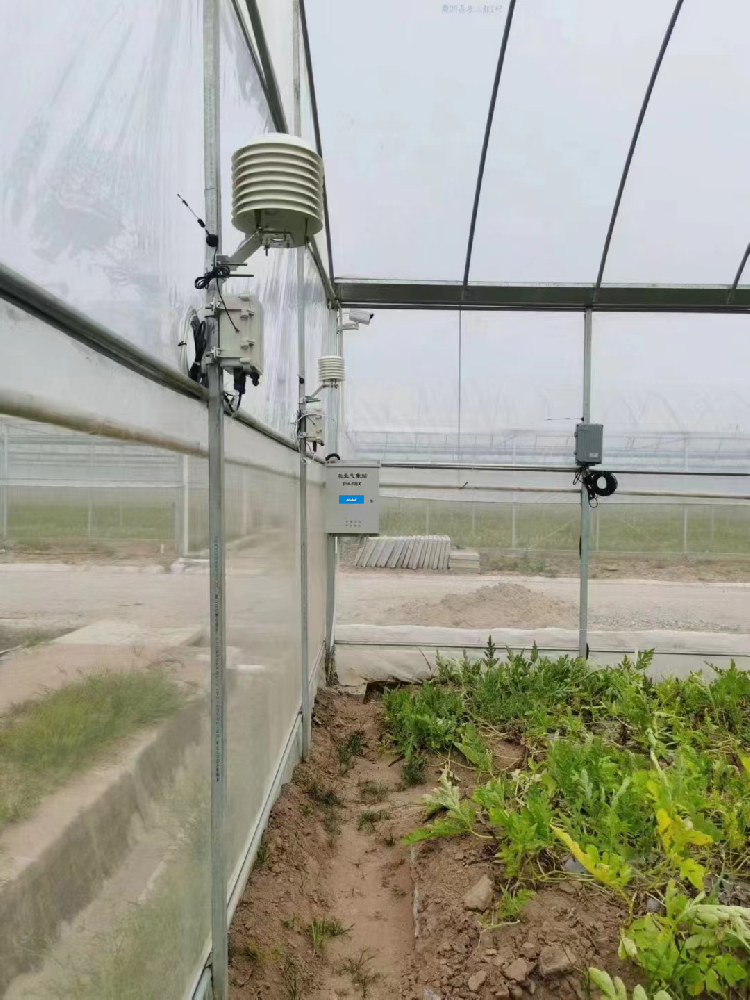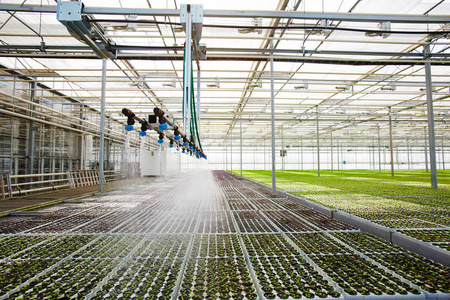

— Blogs —
—Products—
 Consumer hotline +8618073152920
Consumer hotline +8618073152920 WhatsApp:+8615367865107
Address:Room 102, District D, Houhu Industrial Park, Yuelu District, Changsha City, Hunan Province, China
Technical Support
Time:2024-05-18 16:41:12 Popularity:2139
The smart greenhouse system building plan is a comprehensive project aimed at realizing intelligent monitoring and control of the environment in the greenhouse by integrating modern technological means in order to improve the yield and quality of crops. The following is a basic smart greenhouse system building program:

I. Project Background and Objectives
The smart greenhouse system is based on the Internet of Things, cloud computing, big data and other technologies to carry out real-time monitoring and control of the environment in the greenhouse to realize the precise planting and management of crops. Through the smart greenhouse system, it can improve the yield and quality of crops, reduce labor costs, reduce environmental pollution, and promote the sustainable development of agriculture.
Second, the composition of the intelligent greenhouse system
1. Environmental monitoring system: by laying temperature sensors, humidity sensors, light sensors, CO2 concentration sensors and other sensor equipment inside the greenhouse, it monitors the environmental parameters inside the greenhouse in real time and uploads the data to the cloud platform for processing and analysis.
2. Automatic control system: according to the data collected by the environmental monitoring system, the intelligent greenhouse is equipped with an automatic control system, which can realize the automatic control of irrigation, ventilation, shading and other equipments, and guarantee the best environmental conditions required for the growth of crops.
3. IoT platform: build an IoT platform to realize real-time collection, transmission, storage and analysis of sensor data, providing data support for agricultural production.

4. Cloud platform: through the cloud platform, you can remotely view the environmental parameters in the greenhouse, monitoring screen and other information to realize the remote management of the greenhouse.
Intelligent greenhouse system construction process
1. Pre-planning and site selection: According to the planting needs of crops and local climate conditions, choose a suitable location for greenhouse construction, requiring flat terrain, convenient transportation, and adequate water supply.
2. Design of intelligent system program: according to the actual situation of the greenhouse and the planting needs of crops, design the intelligent system program and design the scale, shape and structure of the greenhouse. For example, the length, width, height and whether it needs to be divided into multiple areas. Including sensor type, number, location, automatic control system design program.
3. Budget: Estimate the funds needed to build the intelligent greenhouse, including hardware facilities, sensors, software systems, etc.
4. Approval: Apply for relevant formalities, such as land use, construction permits, etc.
5. Construction of the main frame of the greenhouse: according to the design program, construction of the main frame of the greenhouse including columns, beams, arches, etc., to ensure the structural stability and safety of the greenhouse. Covering materials: choose suitable covering materials, such as plastic film, glass, sunshine board and so on.
6. Installation of intelligent environment regulation and control equipment: install sensor equipment, irrigation system, ventilation system, sunshade system and other intelligent environment regulation and control equipment inside the greenhouse.
6.1 Irrigation system: build the irrigation system, including water pump, water pipe, sprinkler head and so on.
6.2 Ventilation system: install ventilation equipment, such as vents, fans and so on.
6.3 Temperature control system: install temperature controllers, heaters, refrigeration equipment and so on.
6.4 Lighting system: install artificial light sources, such as LED lights, fluorescent lights, etc. as needed.
6.2 Installation of sensors: install temperature sensors, humidity sensors, light sensors, soil moisture sensors in the greenhouse to monitor temperature, humidity, light intensity, light intensity, etc. in real time.
7. Integrate monitoring sensors: integrate sensor devices with the IOT platform to realize real-time data collection and transmission.
8. Build IoT platform: Build IoT platform to realize data storage, analysis and visualization display.
8.1. data collection and transmission: develop a data collection system to collect sensor data in real time and transmit the data to the cloud through IoT technology.
8.2. Data analysis and processing: data analysis is carried out in the cloud, and the data are processed and analyzed according to preset rules and algorithms.
8.3. control instruction issuance: according to the result of data analysis, generate control instructions, such as adjusting temperature, humidity, light, etc.
8.14. User interface: develop user interface to display real-time data, historical data and control commands, etc.

9. Debugging system and access to the cloud: debug the system to ensure that the functions operate normally, and access the system to the cloud to realize remote management.
9.1 After the installation is completed, system debugging is carried out to ensure the normal operation of various hardware facilities and software systems.
9.2 Adjust parameter settings and optimize system performance according to actual operation.
9.3 Conduct regular maintenance and overhaul to ensure system stability and reliability.
Training and guidance
1. train the users to make them master the operation of the system.
2. Provide technical support to solve the problems encountered in the process of use.

V. Intelligent greenhouse system functions
1. Environmental monitoring: real-time monitoring of temperature, humidity, light, CO2 concentration and other environmental parameters in the greenhouse, and upload the data to the cloud platform for processing and analysis.
2. Automatic control: According to the environmental monitoring data, the automatic control system can realize the automatic control of irrigation, ventilation, shading and other equipment to ensure the best environmental conditions for crop growth.
3. Remote management: through the cloud platform, you can remotely view the environmental parameters, monitoring screen and other information in the greenhouse to realize remote management of the greenhouse.
4. Data analysis: Analyze the collected data by using cloud computing, big data and other technologies to provide decision-making support for agricultural production.

VI. Precautions
1. When purchasing hardware such as sensors and control equipment, you should choose regular manufacturers to ensure the quality and stability of the equipment.
2. When designing and constructing the system, full consideration should be given to the planting needs of crops and local climate conditions to ensure the practicality and applicability of the system.
3. When using the system, regular maintenance and repair should be carried out to ensure the normal operation of the system and the accuracy of the data.
Through the implementation of the above program, an efficient, intelligent and practical intelligent greenhouse system can be constructed to provide strong support for agricultural production.
Prev:Agricultural Weather Station Installation Guide
Next:Common Faults and Solutions for Automatic Weather Stations
Related recommendations
Sensors & Weather Stations Catalog
Agriculture Sensors and Weather Stations Catalog-NiuBoL.pdf
Weather Stations Catalog-NiuBoL.pdf
Related products
 Combined air temperature and relative humidity sensor
Combined air temperature and relative humidity sensor Soil Moisture Temperature sensor for irrigation
Soil Moisture Temperature sensor for irrigation Soil pH sensor RS485 soil Testing instrument soil ph meter for agriculture
Soil pH sensor RS485 soil Testing instrument soil ph meter for agriculture Wind Speed sensor Output Modbus/RS485/Analog/0-5V/4-20mA
Wind Speed sensor Output Modbus/RS485/Analog/0-5V/4-20mA Tipping bucket rain gauge for weather monitoring auto rainfall sensor RS485/Outdoor/stainless steel
Tipping bucket rain gauge for weather monitoring auto rainfall sensor RS485/Outdoor/stainless steel Pyranometer Solar Radiation Sensor 4-20mA/RS485
Pyranometer Solar Radiation Sensor 4-20mA/RS485
Screenshot, WhatsApp to identify the QR code
WhatsApp number:+8615367865107
(Click on WhatsApp to copy and add friends)
